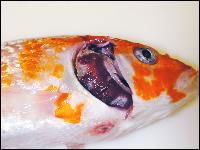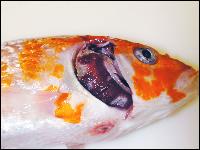With the increased incidence of Koi Herpes Virus (KHV) in the U.S. over the last few years, we have dedicated this resource to clear up any misconceptions.
What is Koi Herpes Virus (KHV)?
Koi Herpes Virus (KHV) is the common name for cyprinid herpesvirus-3. It is a cousin of “carp pox,” cyprinid herpesvirus-1. Cyprinid herpesvirus-2 is the name of goldfish hematopoetic necrosis virus. Since it is a herpes virus, it can have latent stages where the virus is present, but dormant and not shedding, and carriers, infected individuals that carry and shed the disease, but show NO clinical signs.
How is Koi Herpes Virus transmitted?
Most commonly, KHV is transmitted through contact with infected fish. However, it can also be spread through infected water and contaminated equipment, such as nets and buckets. The critical zone for KHV spread is 60-77F (16-25C). Depending on the temperature, there may be an incubation period of 7-21 days, where the fish have been infected, but are not yet showing clinical signs.
What are the clinical signs of Koi Herpes Virus?
The signs of KHV vary and can include high mortality, increased lethargy, increased secondary bacterial and parasite infections, decreased mucus production, necrotic gill tissue and sunken eyes.

How do I test my fish for KHV?
There are two standard tests available for KHV. All samples MUST be submitted to the lab by the veterinarian who did the sampling. No lab will accept tissues from untrained persons. KHV is an OIE reportable disease but depopulation is not required.
- PCR – This type of testing can be performed on live or dead fish and tests for an ACTIVE infection. Fish that are not showing clinical signs should not undergo this type of testing. It is required for testing dead fish.
- ELISA – This type of testing is performed on blood from fish and tests EXPOSURE to KHV by evaluating antibody levels. This test can be used for fish NOT showing clinical disease. Since a blood draw is required, this testing is required for live fish.
What treatment is available for KHV?
There is NO TREATMENT for KHV. Since it is a herpesvirus, an infected fish is infected for life. Although it is a reportable disease, depopulation is not required. It is the decision of the owner with help from their veterinarian to decide what to do with any surviving carriers.
Popular online theories about disease treatment are not valid. By its definition, all herpes viruses, regardless of infected species, bind to neurons and can become latent. This means that they may reside dormant in tissues until they are activated due to some condition or stressor. Heat treatments have not been proven to significantly improve survival rates. There are many available protocols for preventing disease transmission.
How do I keep my fish from becoming infected?
QUARANTINE! No matter what dealer the fish comes from, all new fish MUST be quarantined for 4-6 weeks MINUMUM! Keep them in a separate system with separate equipment far enough away from the main system where no over-splash can hit. They must be kept in range for the virus to appear: 60-77F (16-25C).
For more information, please see University of Florida or the OIE.

